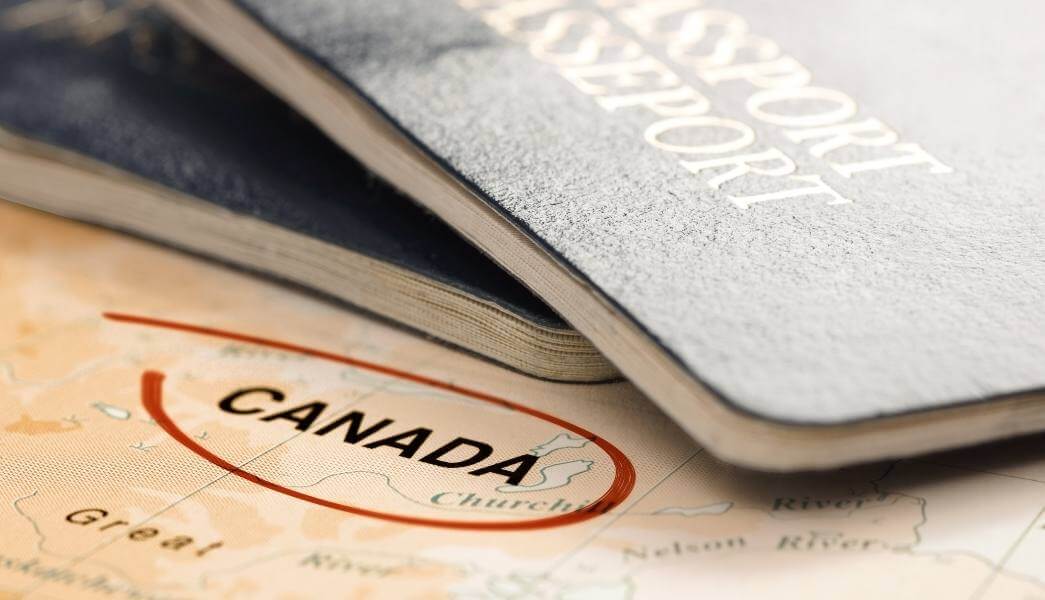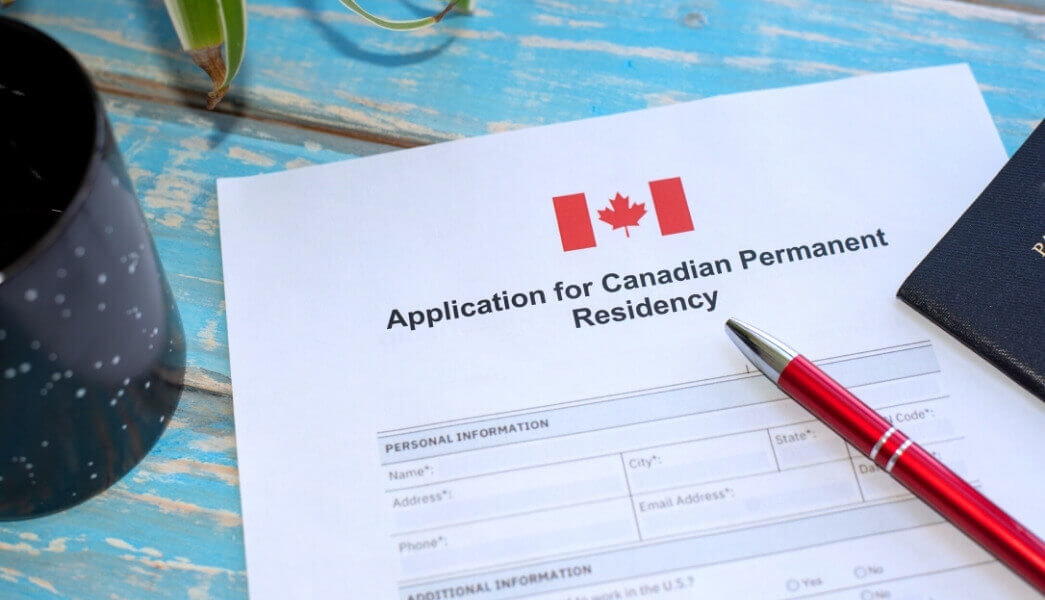Immigration, Refugees and Citizenship Canada (IRCC) held an Express Entry draw on April 1, 2021, inviting 5,000 candidates to apply for permanent residency who qualified for the Canadian Experience Class (CEC) and had a Comprehensive Ranking System (CRS) score of 432 or higher.
Background on Express Entry and the CEC
Express Entry is a by-invitation-only system for managing Canada’s intake of skilled immigrants. Candidates may become a candidate if they qualify for any 1 of 4 immigration programs, the Canadian Experience Class (CEC), the Federal Skilled Worker class (FSW), Federal Skilled Trades class (FST) and as a Provincial or Territorial Nominee.
To qualify for the CEC, a person must have acquired in the past 3 years at least 1 year of paid, full-time (or part-time equivalent) work experience in Canada as an employee in a skilled, professional or managerial occupation. A person must also pass an English or French language proficiency test.
To obtain a CRS score, candidates must express their interest in immigrating by completing an Express Entry Profile – an information questionnaire designed to assess a candidate’s immigration potential. Points are awarded on the basis of a number of profile factors, including: a candidate’s reported age, education attainment, language proficiency, work experience inside and outside of Canada, arranged employment in Canada, family composition and, in the case of a candidate with a spouse or common-law partner, their spouse’s or partner’s educational attainment, language proficiency and work experience in Canada.
Notably, while candidates receive scores for work experience over the past 10 years whether acquired inside or outside of Canada, candidates receive more CRS points from Canadian work experience than they do from an equivalent number of years of foreign work experience. Additional points are awarded to those with arranged employment in Canada.
Higher CRS scores are generally associated with an increased chance of receiving an invitation to apply.
Express Entry draws in 2021
There have been several Express Entry draws since the start of 2021 from which certain trends can be observed. The first draw of 2021 occurred on January 6, 2021 and the most recent occurred on April 1, 2021. From January 6 to April 1, 2021 a total of 49,124 candidates were invited to apply for permanent residency. On February 13, 2021, IRCC conducted an unprecedented draw by selecting every CEC eligible candidate in the Express Entry pool. A total of 27,332 candidates received an invitation on that day. Since then, IRCC has continued to hold draws.
From January to April 1, 2021, over 95% of Express Entry candidates invited were selected for their eligibility for the CEC. The remainder held nominations from Canada’s provinces and territories.
Express Entry candidates in 2021
A few days prior to each round of invitation, IRCC publishes the number of candidates in the Express Entry pool. For the last report of 2020 on December 21, 2020, there were a total of 147,487 in the pool of candidates. For the first report of 2021 on January 4, 2021, there were a total of 146,495 candidates. Based on this, it can be safe to assume that 2021 began with approximately 147,000 candidates in the Express Entry pool.
Prior to draws in February, March and April 1, IRCC reported the following total candidates in the Express Entry pool:
- 152,714 CRS candidates as of February 8, 2021
- 147,688 CRS candidates as of March 1st, 2021
- 162,120 CRS candidates as of March 15th, 2021
- 165,476 CRS candidates as of March 29th, 2021
2021 Express Entry trends
Despite the large number of CEC selections for 2021, the CRS score for those candidates invited on April 1, 2021 remained quite high: 432 points. This score is below the 449 points for the 5,000 candidates drawn on March 18, 2021. However, 432 points is above the historic lowest score in 2021 of 75 points from the draw on February 13, 2021. It is also above the prior historic low score for a general draw that included CEC eligible candidates of 413 points on May 31, 2017. And it is only slightly below the historic average competitive score range of between 440-460 CRS point in the years 2015 to present.

Canada’s 2021 immigration targets
As I have reported before, Canada’s immigration target for 2021 is the most ambitious in a century at over 400,000 permanent residents across all categories. Economic immigration is targeted to make up between 153,600 and 208,500 immigrants. This includes family members of candidates invited under Express Entry.
Express Entry historical data
Based on historical data, the average family size of the Express Entry candidate is approximately 1.5. This means that, of the 49,124 candidates invited to date in 2021, it is expected that the total number of persons invited, including accompanying family members, is approximately 73,686 persons. Historical data also informs us that, based on the number of Express Entry permanent residency admissions each year, a high number of invited candidates and their family members fail to be admitted after receiving an invitation.
There are various reasons a high number of candidates invited each year fail to be admitted as permanent residents, such as: the candidate declined an invitation, the candidate failed to submit an application on time, the candidate applied and received a rejection because their submitted application was incomplete, the candidate applied and was refused based on a finding of ineligibility or inadmissibility, or general processing lag. Nonetheless, the 5-year historical data available from 2015 to the end of 2019 suggests an admissions rate of about 65% out of the total number of persons invited.
Express Entry projections based on historical data
If, going forward, we assume a similar average family size of 1.5 persons for each candidate invited, and assume an admissions rate of about 65%, then, based on the 49,124 candidates invited to apply thus far in 2021, we could expect about 47,895 new permanent residents from that group.
However, the actual number may be lower. IRCC reports that approximately 90% of CEC candidates are already living in Canada. The remaining 10% are outside of Canada and, due to border entry restrictions, may not be able to travel to Canada to become permanent residents in 2021.
If we assume all invited PNP candidates are outside of Canada, and base our predictions of new permanent residents solely on 90% of the CEC invited candidates and their family members, and factor in a 65% admissions rate, we can estimate that approximately 63,000 persons are to be admitted as permanent residents in Canada in 2021 from this class of Express Entry candidates and their accompanying family members.
This number of admissions would represent between 30% to 41% of Canada’s economic class immigration target for 2021.
Findings from Express Entry projections
What is evident from this data is that:
- The number of total Express Entry candidates in the pool rose from the start of the year from approximately 147,000 candidates to approximately 160,000 or more candidates, and
- A CRS score required by a CEC candidate remains close to the historic competitive average score
There is too little data to determine whether the CRS score dropping from 449 points on March 18, 2021 to 432 points on April 1, 2021 for CEC eligible candidates represents a trend. However, despite that over 46,700 CEC eligible candidates – and over 49,000 total candidates – have been invited to apply for permanent residency in 2021 through the Express Entry system, the number of total candidates in the pool is still approximately 160,000 – higher than at the start of 2021 – and of which a substantial portion are likely to be CEC eligible candidates with scores at or below 432.
This means that a large number of CEC candidates were likely encouraged to enter the pool after the February 13, 2021 draw, which is also suggested by the over 60% increase in Express Entry candidates with scores below 300 points from January 6 to March 29, 2021.
It also means that Canada is on track to meet its economic immigration target solely from candidates already in Canada who qualify for the CEC program.
How did Canada get here?
In the years prior to the introduction of the Express Entry system, economic immigration through the CEC, FSW and FST was cap-managed on first-come-first serve basis.
This meant that any person who met the minimum eligibility criteria for the CEC, FSW or FST could apply for permanent residency until the total year cap was reached. Specifically, in 2014, the total cap for the CEC was set to 20,000 complete applications, 25,000 for FSW applications, and 8,000 for FST applications. The CEC cap was not reached until October 20 of that year. Applications received after October 20, 2014 that date did not make it under the cap and were returned in early 2015.
While there were certainly many CEC applications that were returned, it is unlikely the number of CEC eligible candidates interested in applying for permanent residency was anywhere close to the level of interest we see today.
Increases in temporary students and temporary workers
The increased interest in the CEC can be explained by the increased number of skilled and professional temporary residents on work permits and study permits in Canada in the years following the introduction of the Express Entry system. In the time between October 20, 2014 and the present, more highly skilled and professional temporary workers have been admitted into Canada than had been admitted in the years prior when the CEC was a cap-managed, first-come-first serve program.
Further, many of those temporary workers are former temporary students who have since completed or are in the process of completing post-graduation work on temporary work permits.
Canada’s evolving immigration strategy
What this means is that Canada’s immigration strategy has substantial changed in the years since the introduction of the Express Entry system, whether by intentional design or incidental effect. Since the Express Entry system disproportionally awards work experience in Canada as compared to work experience acquired outside of Canada, and awards additional points when a candidate possesses arranged employment in Canada, the system has encouraged more and more interested immigrants to seek employment in Canada before they commit to permanent immigration.
As a result, Canada’s high skilled immigration strategy in 2021 is almost entirely based on foreign nationals who first committed to relocating to Canada for temporary work or post-secondary studies hoping that they would be invited to apply for permanent residency in the years that they are inside of Canada and working.
Is Canada asking too much?
While that is a big commitment to ask of foreign high skilled professionals. It is an even bigger commitment to ask when considering that job opportunities have declined because of pandemic-induced restrictions on the economy, and an even bigger ask when you consider that new immigrants are disproportionally affected by economic disruptions. (In fact, since 2013, Canada’s temporary foreign worker program has required that temporary foreign workers be laid off before Canadians holding the same jobs in the same work locations for the same employers, and restricts the hiring of temporary workers until the laid-off Canadians have returned to work).
And yet, despite the size of the ask, Canada appears to be able to increase its immigration target and meet its goals.
Is Canada’s immigration system designed to attract top foreign talent?
It is not certain whether interested immigrants are aware of the commitment they are being asked to make in exchange for the chance at permanent residency. Though if experience with the Express Entry system is any indication, large numbers of prospective immigrants are likely to figure it out. They have already responded to the biases of the Express Entry system by increasing their numbers as temporary workers and international students.
On the other hand, it means that highly skilled foreign workers who are unwilling to make the commitment may remain beyond Canada’s grasp.
Canada’s immigration strategy, therefore, has become less about attracting the best and brightest foreign talent to Canada to encourage economic growth and development, and more about attracting those willing to gamble by placing big bets on their future.
One obvious solution to
this dilemma is to remove the CEC from the Express Entry system and parse out the economic immigration analysis. The CEC could be made an open immigration program, while Express Entry admissions could continue to be made available to FSW and FST eligible candidates. Further, separate skilled immigration targets should be announced for the CEC, FSW and FST programs to provide a better indication to prospective immigrants of what Canada’s immigration system desires.
Rewarding foreign nationals who have invested time, money and in-demand work in Canada
This is a logical proposal. CEC applicants have already demonstrated their economic establishment by attaining skilled or professional work experience in Canada, and many of them have advanced degrees and are working in high skilled technical occupations where there is short supply of labour.
Many CEC applicants were former international students who spent tens or hundreds of thousands of dollars to secure post-secondary degrees and live in Canada. They then gained the opportunity to work on a post-graduation work permit, successfully secured paid productive work in high skilled or professional jobs, and demonstrated their English or French language proficiencies.
Other CEC applicants obtained work permits to work in high skilled or professional positions with Canadian employers in locations across Canada suffering from skilled labour shortages. Still others secured their work permits because they entered through Canada’s International Mobility Program, including workers permitted to work in Canada without needing a labour market assessment (LMIA) because of an international trade agreement, worker mobility agreement, demonstrating significant economic or cultural benefits, or other established reasons deemed so beneficial to Canada that their employment in Canada was deemed exempt from an economic needs test.
Keeping the door open to top foreign talent
Meanwhile, by maintaining Express Entry spots for those most competitive skilled trades workers and skilled professional, Canada can continue to attract foreign skilled trades and skilled professional workers. Further, in time, a trendline for what is a competitive CRS score for FSW and FST eligible candidates will develop, and serve as a benchmark for these prospective immigrants to assess their chances for receiving an invitation.
Taken together, these changes would allow Canada to continue to obtain the economic, social and cultural benefits of skilled immigration, and reward the significant investments, commitments and contributions of temporary workers and international students in Canada.
Getting an invitation to apply
Mandelbaum Immigration Lawyers can help you apply for Express Entry permanent residency. We can develop strategies to help you find ways to increase your Comprehensive Ranking System score.
Simply fill out our contact form, send us an e-mail, or call us during our office hours.






